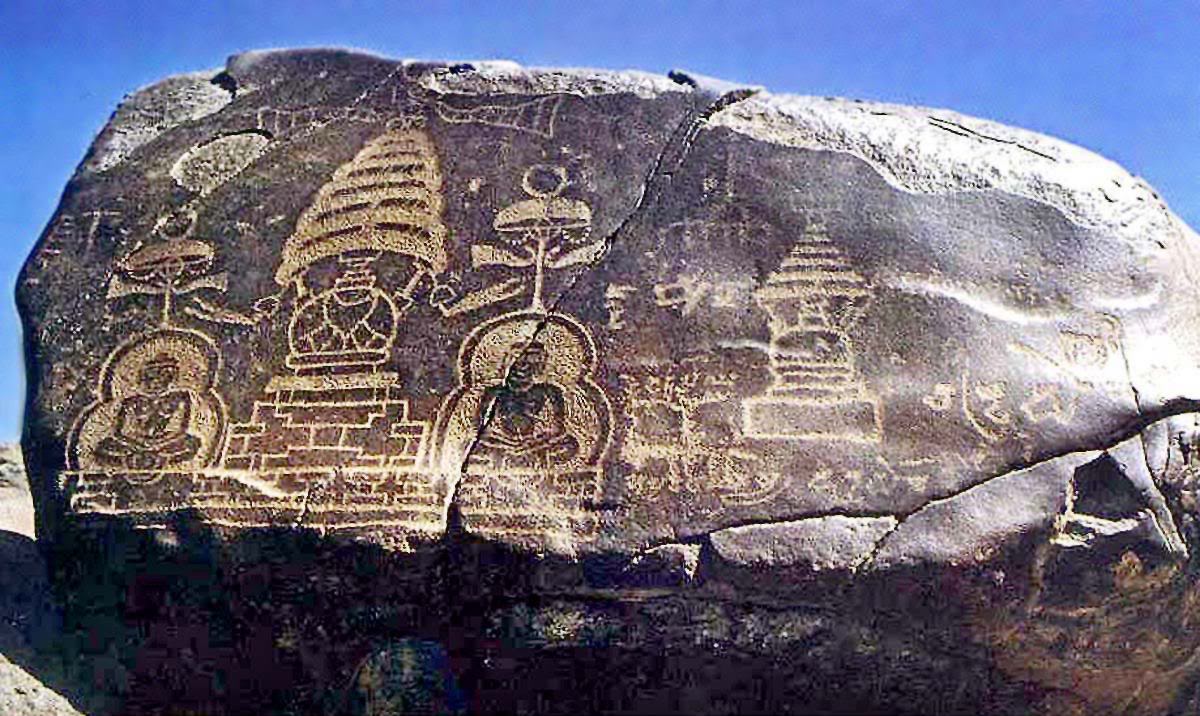Diamer Basha Dam Threat to Ancient Rock Carvings

Pakistan’s ambitious Diamer Basha Dam project, while promising significant benefits in terms of hydroelectric energy and irrigation, casts a shadow over a priceless cultural heritage. The construction of the dam threatens to submerge tens of thousands of ancient rock carvings in the Chilas Valley, a region in Gilgit-Baltistan known for its extensive open-air ‘rock museum’.
A Cultural Treasure at Risk
The Chilas Valley, nestled in the mountainous area of northern Pakistan, is home to one of the largest collections of petroglyphs in the world. These ancient carvings, some dating back to 8,000 BCE, are etched into rocks along the banks of the Indus River. They provide a visual history of the region, depicting animals, ‘triangular men’, images of Buddha, Buddhist stupas, and hunting scenes.
The Significance of the Petroglyphs
These carvings are not just artistic expressions; they are historical records that offer insights into the lives of the people who have passed through this region over millennia. The area served as a corridor for peaceful travelers and invaders from Central Asia and was a branch of the Silk Road used by merchants, pilgrims, and artisans.

The Diamer Basha Dam Project
The Diamer Basha Dam, supervised by Pakistan’s Water and Power Development Authority (WAPDA), is set to create an eight-million-acre-foot, 272-metre-high reservoir. It aims to generate 4,500 megawatts of hydroelectric energy and irrigate 1.2 million acres of agricultural land. However, this development comes at the cost of submerging most of the area’s magnificent heritage.
Efforts to Preserve the Carvings
Efforts are underway to preserve the carvings, with some scholars and organizations calling for urgent action to document and save what can be saved. The Sustainable Tourism Foundation Pakistan (STFP) has conducted surveys and documented the carvings and inscriptions, emphasizing the need for conservation.
The Loss of a Legacy
The submerging of these carvings is described by scholars as “a great loss for Pakistan.” The petroglyphs represent irreplaceable cultural history, with inscriptions in various ancient languages, including Brahmi, Sogdian, middle Persian, Chinese, Tibetan, and even ancient Hebrew. The loss of these carvings would mean the erasure of tangible links to the past.
Conclusion
The Diamer Basha Dam presents a complex challenge, balancing the need for development with the preservation of cultural heritage. As the project progresses, Pakistan must find ways to mitigate the impact on these ancient carvings, ensuring that this rich tapestry of human history is not lost forever.
Read Also
Top 10 Natural Wonders in Pakistan
Top 10 Best Hiking Trails in Pakistan
Top 10 Most Popular Pakistani Foods
Top 10 Most Beautiful Lakes in Pakistan
Most Popular Cultural Festivals in Pakistan
Top 10 Famous Historical Forts in Pakistan
Top 5 Most Famous Sufi Shrines in Pakistan
Top 10 Most Beautiful Waterfalls in Pakistan
Top 5 Hanging Suspension Bridges of Pakistan
Best Adventurous Activities in Pakistan 2024-25
